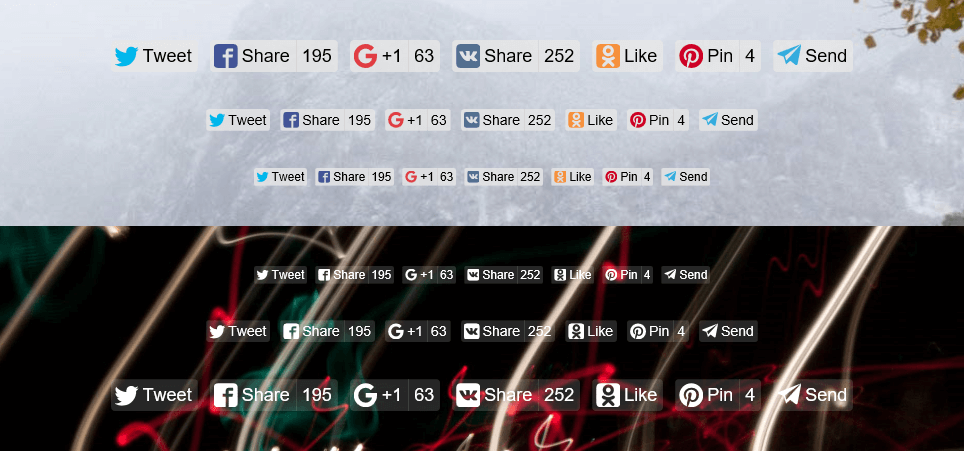Likely are well-designed social buttons:
I’m currently working on covering them with UI tests using Selenium. So far, several notes:
- Selenium is cross-platform, but different platforms support different sets of functionality. Node.js isn’t the most complete one, unfortunately. If you google how to do something with Selenium, find a StackOverflow reply with the Java API and try to do the same in JavaScript, don’t expect it will definitely work. That API could just be absent.
-
Selenium 3 is coming, but most tutorials focus on Selenium 2. Selenium 2 was released in 2011, and version 3 is expected to be released this year. In fact, the selenium-webdriver npm package already installs 3.0.0-beta.2. There’re no major breaking changes between 2.53.2 and 3.0.0, but expect that some tutorial code could just not work.
-
The selenium docs are scattered between different places, and it’s hard to find the right thing when you’re googling something. One part of the documentation is at docs.seleniumhq.org, another is in the repository wiki, etc. It was quite hard to find the proper actual API docs for JavaScript, so here are they: http://seleniumhq.github.io/selenium/docs/api/javascript/
-
Mock the external services when doing integration tests. When testing the sharing counters, we rely on responses from the social networks. Turns out these services don’t always work well (especially Facebook and Google+) which makes the tests fail. Viktor Karpov suggested to mock the responses, and it seems it’s a default way of doing the integration tests which I didn’t know. I’m working on this now.
-
Mocking AJAX requests with Selenium is hard. I need to mock them to simulate the social network responses (see the previous point). So far, I’ve only found two libraries that can help with this: Sinon.js and xhr-mock. Sinon.js is popular and heavily featured, but it has quite a complex API, and I haven’t yet succeeded in making it work. xhr-mock is way simpler and can also mock only specific URLs (which is more complicated with Sinon), but it doesn’t support XMLHttpRequest.prototype.addEventListener and doesn’t have a UMD build. Sadly.
You can follow the pull request I’m working in to stay tuned (and see how we manage to do the AJAX mocking): https://github.com/ilyabirman/Likely/pull/73
